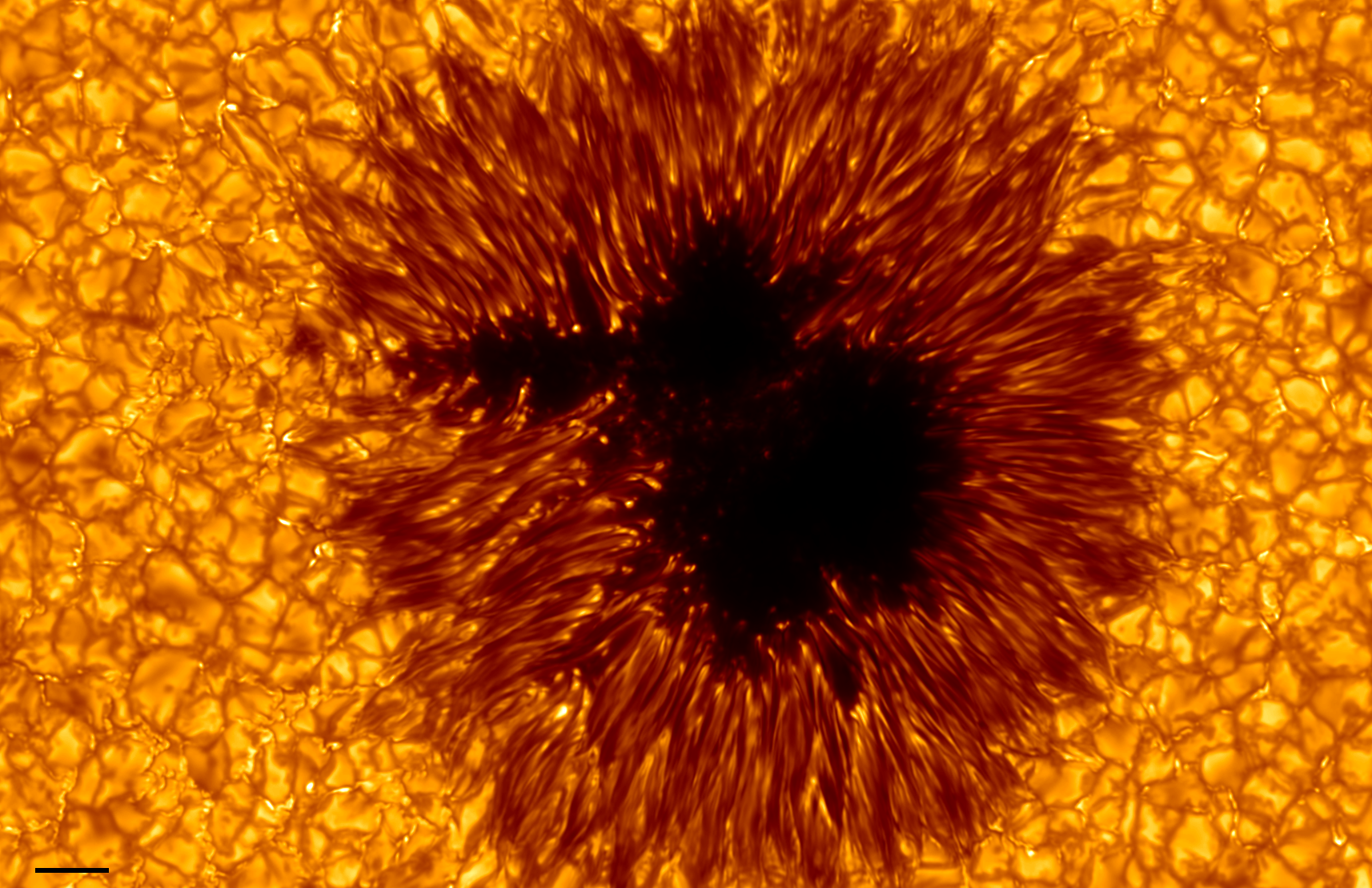The Daniel K. Inouye Solar Telescope, which is operated by the National Science Foundation (NSF), has once again become the center of attention after the publication of eight beautiful photographs of the sun, which is the star that is closest to Earth. This cutting-edge telescope, which was just recently inaugurated, is currently in its Operations Commissioning Phase (OCP), which is a crucial stage during which scientists and researchers submit their science projects in order to explore and study various parts of the sun. Those proposals that shed fresh light on these mysterious aspects of the sun and its surface, such as sunspots and quiet regions, were among those that were chosen for further study.
Astronomers have, since the beginning of time, taken a keen interest in sunspots, which are black patches on the surface of the sun that give the appearance of being colder. These interesting sunspots are seen in stunning clarity in the photographs that were just made public by the Daniel K. Inouye Solar Telescope. Sunspots are known to be regions on the surface of the sun that have persistently strong magnetic fields, which causes localized cooling and a reduction in the amount of energy emitted. Sunspots, despite their apparent darkness, are extremely hot, with temperatures exceeding over 3,500 degrees Celsius (6,332 degrees Fahrenheit).
The fact that sunspots have the potential to set off cataclysmic events is one of the reasons they are so fascinating. Solar flares and coronal mass ejections (also known as CMEs) are two of the most stunning phenomena that can be emitted from these regions of the sun. Solar flares are rapid and powerful releases of energy that are frequently accompanied by an outburst of radiation and particles. Solar flares can occur anywhere on the sun. On the other side, coronal mass ejections (CMEs) are enormous outbursts of plasma and magnetic fields that have the potential to damage electrical systems and satellite communications on Earth. It is essential for our technologically dependent society to have a solid understanding of sunspots and the processes that can contribute to the formation of such phenomena in order to accurately predict and prepare for the potential effects of solar storms.
The photographs that were taken by the Daniel K. Inouye Solar Telescope and made public provide a fascinating look into the sun’s less active areas. These regions are distinguished from darker lanes of cooler, downward-flowing solar plasma by the presence of plasma that is moving upward at a high temperature. These elements come together to form a fascinating pattern, which elucidates the complex and ever-changing nature of the sun’s atmosphere. Researchers are able to get new understanding of the sun’s magnetic behavior, convection processes, and heat transport mechanisms as a result of their investigations into these quiet regions.
After the successful execution of the selected science projects, the data for the game-changing telescope was collected during the Cycle 1 operating window in 2022. Because of the increased capabilities of the Daniel K. Inouye Solar Telescope, the Cycle 1 operating window represented a huge step forward in our understanding of the sun.
The scientists and researchers who took part in the expedition have expressed their delight and eagerness to make other discoveries in the years to come. The capability of the Daniel K. Inouye Solar Telescope to record images of the sun with a high resolution enables researchers to investigate the magnetic fields of the sun, observe dynamic occurrences, and investigate the fundamental physics processes that regulate our star in a way that has never been done before.
The scientific community is eagerly awaiting the next batch of photographs and data that will certainly reveal new insights into the complicated and awe-inspiring activity of the sun as the telescope begins its Operations Commissioning Phase. The information that we learn from these observations will not only enhance our understanding of the sun, but it will also help us improve our ability to predict the weather in space, which will ultimately protect our technology and infrastructure from the risks that could be posed by solar storms.
In conclusion, the announcement of the publication of eight new photos taken by the Daniel K. Inouye Solar Telescope marks an important landmark in the field of solar astronomy. These pictures give a glimpse into the fascinating and ever-changing nature of the sun by concentrating on sunspots and relatively tranquil patches on its surface. The continuous mission of this telescope is expected to reveal further secrets about our sun, which will improve our understanding of the ways in which our star affects both our planet and our culture. The scientific community is looking forward with bated breath to the ground-breaking discoveries that are yet to be made as the voyage of discovery continues.
![]()
